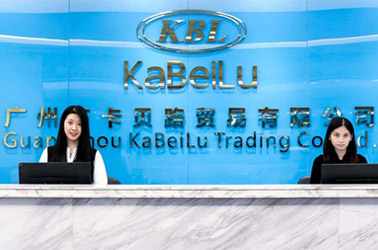KBL BLOG
How to choose suitable suppliers in China
A Comprehensive Guide to Selecting the Right Suppliers in China: From Screening to Collaboration
For enterprises, choosing the right suppliers is a crucial step in ensuring supply chain stability, controllable product quality, and cost optimization. In China's vast market, supplier resources are abundant but vary greatly in quality, so mastering scientific selection methods is essential. This article shares a practical supplier selection process to help you efficiently find reliable partners.
I. Clarify Requirements: Accurate Positioning is the Premise
Before searching for suppliers, you must clearly define your own needs to avoid aimless screening later. Focus on clarifying the following 3 core points:
• Core Product Parameters: Specify product specifications, materials, implementation standards, quality requirements (e.g., whether SGS, CE, or other certifications are required), maximum production capacity, and delivery cycles.
• Basic Cooperation Conditions: Determine the budget range, payment methods (e.g., advance payment ratio, credit period), minimum order quantity (MOQ), and after-sales service requirements (e.g., return and exchange policies, warranty period).
• Value-added Needs: Whether you need suppliers to provide customized services, R&D support, or logistics and distribution, or require them to have environmental protection and social responsibility (e.g., ESG) qualifications.
II. Multi-channel Screening: Expand the Pool of High-quality Suppliers
After clarifying precise requirements, efficiently obtain supplier information through the following channels to avoid selection limitations caused by relying on a single source:
1. Online Platforms: Suitable for preliminary screening to quickly reach a large number of suppliers.
• Comprehensive Platforms: Alibaba (1688), Made-in-China.com, covering all categories and concentrating small and medium-sized suppliers.
• Vertical Platforms: Such as Lichuang Mall and Mr. IC in the electronic components field, and MOLBASE in the chemical industry, which accurately match resources in segmented industries.
• Cross-border Platforms: Amazon Global Selling Supplier Platform, suitable for enterprises with export needs.
2. Offline Exhibitions: Suitable for in-depth connection and intuitive assessment of strength.
• Industry Exhibitions: Such as the Canton Fair (comprehensive) and Shanghai Electronics Fair (vertical field). You can inspect samples on-site, communicate face-to-face with principals, and quickly build trust.
3. Network Recommendations: Give priority to these to reduce trial-and-error costs.
• Recommendations from peers and upstream/downstream partners, or obtaining endorsed supplier lists through industry associations and chambers of commerce. These resources are usually verified by the market.
4. On-site Inspections: For core suppliers, it is essential to conduct on-site visits. Focus on checking the production workshop, advanced level of equipment, quality control processes, and inventory management to avoid "shell companies" or "small workshops".
III. Core Evaluation: 3 Dimensions to Screen High-quality Partners
After obtaining the supplier list, conduct strict evaluation from three dimensions—"hard power", "soft power", and "matching degree"—instead of only focusing on price:
1. Hard Power: Ensure Cooperation Stability
• Qualifications and Certifications: Check business licenses, production licenses (e.g., SC certification for the food industry, GMP certification for medical devices), and industry-related certifications (ISO9001 Quality Management System, ISO14001 Environmental Management System) to ensure compliant operation.
• Production Capacity and Delivery Capability: Confirm the scale of its production lines, equipment utilization rate, and whether there is spare production capacity to avoid supply shortages during peak seasons. Meanwhile, understand the stability of its supply chain (e.g., whether there are fixed procurement channels for core raw materials).
• Quality Control System: Inquire about the existence of an independent quality inspection department, quality inspection standards, and sampling inspection processes. You can request past product testing reports or send samples for self-inspection/third-party testing.
2. Soft Power: Determine Long-term Cooperation Potential
• Reputation and Word-of-mouth: Use platforms like "Qichacha" and "Tianyancha" to check if the enterprise has records of dishonesty or legal disputes. Learn about other customers' evaluations on industry forums and social media, or directly ask for contact information of 3-5 past customers for background checks.
• Communication and Response Efficiency: Observe the response speed and problem-solving attitude during daily communication (e.g., whether they proactively report production abnormalities) to avoid "loss of contact" or shirking of responsibilities after cooperation.
• R&D and Innovation Capabilities: If there is a long-term cooperation plan, pay attention to whether the supplier has an R&D team and can cooperate in product iteration and upgrading, to prevent the decline of your own product competitiveness due to the supplier's backward technology.
3. Matching Degree: Avoid "Overqualified for Simple Tasks" or "Underqualified for Complex Tasks"
• Scale Matching: Large suppliers may not pay attention to small orders, while small and medium-sized suppliers may not meet the production capacity requirements for large orders. Choosing a supplier that matches your enterprise's scale and order volume will lead to smoother cooperation.
• Cost Matching: Lower price is not necessarily better; comprehensive evaluation of "cost-effectiveness" is required. If low prices are accompanied by low quality and long delivery cycles, it will instead increase subsequent rework and delay costs. You can request quotations from 3-5 suppliers to compare the differences in quality and service behind the prices.
IV. Small-batch Trial Orders: Verify Cooperation Feasibility
After the preliminary evaluation, do not sign large-value long-term contracts directly. It is recommended to conduct final verification through small-batch trial orders:
• Test whether the product quality meets expectations and is consistent with the sample;
• Inspect whether the delivery cycle is on time and the logistics packaging is standardized;
• Observe whether the after-sales response is timely (e.g., the attitude towards handling a small number of defective products).
After the successful trial order, gradually expand the cooperation scale to reduce cooperation risks.
V. Long-term Management: Grow Together with High-quality Suppliers
Finding the right supplier is not a one-time task. Long-term management is needed to achieve a win-win situation:
• Establish a Communication Mechanism: Hold regular meetings (e.g., monthly/quarterly) to synchronize demand changes and feedback problems, avoiding information gaps.
• Clarify Reward and Punishment Rules: Stipulate clauses such as rewards for meeting quality standards and liquidated damages for delayed delivery in the contract. Meanwhile, provide incentives such as priority payment and increased order share to suppliers that have cooperated well for a long time.
• Avoid Single Dependence: Keep at least 2-3 alternative suppliers for core products to prevent supply chain disruption due to the shutdown, price increase, or crisis of one supplier.

Conclusion
Selecting suppliers in China is essentially a process of "first clarifying needs, then conducting precise screening, and finally implementing dynamic management". Do not rush for quick results or only focus on short-term costs. Instead, make a comprehensive judgment from the four perspectives of "compliance, stability, matching degree, and potential" to find high-quality partners that can not only meet current needs but also support future development.





